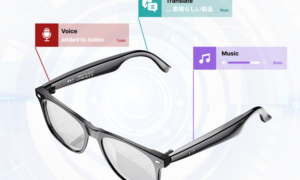When using night vision devices, one common observation is the green hue of the images produced. This leads to the question, why is night vision green. The green color is not arbitrary; it is chosen for several specific reasons that enhance the effectiveness and functionality of night vision optics. The human eye is more sensitive to green light, allowing for greater detail and contrast. Green phosphor screens also provide sharper images and reduce eye strain. Additionally, green is highly efficient in low-light conditions and aligns with the technological design of night vision devices.
Let us understand these reasons that highlight the thoughtful design behind night vision technology.
Human eye sensitivity
The human eye is more sensitive to green light compared to other colors. This sensitivity allows us to discern more shades of green, making it easier to detect contrasts and details in the images produced by night vision devices. By using green, night vision technology leverages the natural capability of our eyes, providing clearer and more detailed images. This enhanced sensitivity is crucial for activities that require precise visual recognition, such as military operations, surveillance, and wildlife observation.
Better image quality
Green phosphor screens in night vision devices produce sharper and clearer images. The green light provides a higher contrast, which enhances the overall quality of the image. This is essential for identifying objects, navigating terrain, and performing tasks in low-light conditions. The high contrast and clarity provided by green images make night vision devices more effective and reliable. Better image quality means users can perform their tasks more accurately and efficiently, even in complete darkness.
Reduced eye strain
Looking through night vision devices for extended periods can cause eye strain. The green color is less likely to cause fatigue compared to other colors like red or blue. This is because green falls in the middle of the visible light spectrum, where our eyes are most comfortable. By using green, night vision devices minimize eye strain and make it easier for users to maintain focus during prolonged use. This reduction in eye strain is particularly beneficial for military personnel, security guards, and anyone who needs to use night vision equipment for long periods.
Enhanced low-light performance
Night vision devices work by amplifying available light to create a visible image. Green phosphors are highly efficient at converting light into visible images, which enhances the performance of night vision optics in low-light conditions. This efficiency ensures that the devices provide bright and clear images even when light is scarce. Enhanced low-light performance is critical for ensuring that users can see clearly in the darkest environments. This makes night vision devices indispensable tools for nighttime activities.
Technological efficiency
The technology used in night vision devices is optimized for green light. The image intensifier tubes, which are a core component of night vision optics, are designed to produce green images. This optimization results from decades of research and development, making green the most effective color for night vision technology. The green color provides the best balance of performance, efficiency, and cost. Technological efficiency ensures that night vision devices are reliable and cost-effective, making them accessible to a wide range of users.
Final words
The choice of green for night vision devices is based on several important factors. Understanding these reasons helps explain why green is the preferred color for night vision optics and highlights the thoughtful design behind this technology. The green hue is not just a technical choice but a practical one, ensuring that night vision devices provide the best possible performance for users in various low-light conditions. Whether used for military, security, or recreational purposes, the green in night vision is essential for clear and effective visual enhancement in the dark.

































